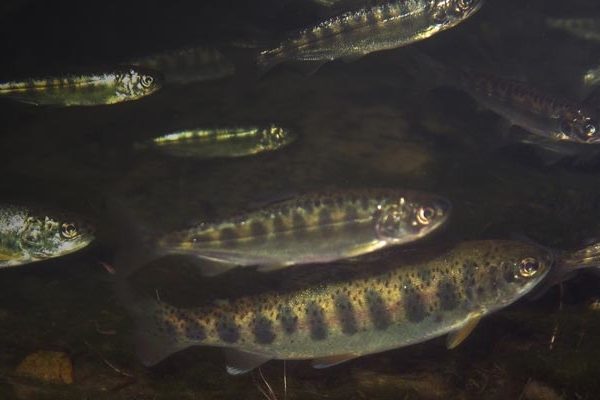Developing an Integrated Strategic Plan for Southern BC Chinook Salmon

ESSA has facilitated the work of the Steering and Planning Committee under the Southern BC Chinook Strategic Planning Initiative.
Project Details
Location: |
Southern British Columbia, Canada, N 49° 6′ 58”, W 123° 11′ 9” | |
Client: |
Fraser River Aboriginal Fisheries Secretariat & Fisheries and Oceans Canada | |
Duration: |
2013 – 2018 | |
Team Member(s): |
Dave Marmorek, Alex Hall | |
Practice Area(s): |
Fisheries & Aquatic Sciences | |
Services Employed: |
Facilitation & Stakeholder Engagement, Environmental Management and Monitoring |
The Problem We Aimed to Solve We Aim to Solve
Chinook salmon are very important to British Columbia — ecologically, economically, and socially. However, many Chinook salmon populations in southern BC have shown decreases in abundance, repeatedly low escapements, declines in fishery catches, reduced and variable freshwater and marine survival rates, high uncertainty about future production, and/or ecosystem effects from climate changes, especially over the last fifteen years. These recent patterns have caused broad concern among First Nations and fisheries managers, commercial and recreational fishers, conservation groups, and other stakeholders. Furthermore, the current state of knowledge is highly variable across southern BC Chinook populations, some of which have excellent information and data but many have considerable gaps in knowledge.
The current project is nested under the auspices of the Southern BC Chinook Strategic Planning Initiative (CSPI). The CSPI is a planning process led by First Nations and DFO, with collaboration from multiple interest groups, with the ultimate goal of developing an Integrated Strategic Plan that accounts for the biological status of Chinook, addresses the causes of recent declines in productivity and abundance, and identifies management actions to improve status. This work is very important. Ultimately, the SPC is striving to represent the collective strategic vision for managing southern BC Chinook salmon of First Nations, DFO and other interested parties, across stocks and management domains. This vision will provide guidance to finer scale tactical planning processes.
How We Helped
The CSPI is the first example of a Tier 2 government-to-government planning process to which additional stakeholders have been invited to participate. The CSPI Steering and Planning Committee (SPC), responsible for providing guidance for the development of the Plan, includes representatives from First Nations, DFO, the recreational and commercial fishing sectors, and non-governmental conservation organizations. The Technical Working Group (TWG), which coordinates scientific analyses and information as required by the SPC, is composed of scientists and technical experts from DFO, First Nations and other interested parties. The Plan is meant to provide strategic direction across a diverse set of stocks, life-history types, habitats, management domains, interests and objectives. The decisions on appropriate strategies are challenging and involve trade-offs, but the recovery of depressed stocks and maintenance of strong stocks will have numerous benefits for First Nations, commercial and recreational fishers, and the people of British Columbia.
For the last several years, ESSA has been the “project lead”, facilitating the SPC and TWG in working toward their goal of developing an integrated strategic plan under the Wild Salmon Policy (WSP) for southern BC Chinook. This work has proceeded within a structured decision-making framework, as also reflected in the WSP five-step planning process. We have worked with the SPC and TWG to clarify the definition of the problem, define the objectives of the SPC, identify performance measures and indicators to assess alternative actions, identify and refine potential management strategies, and to engage in some preliminary exploration of the trade-offs among alternative strategies. Presently, the TWG has been supporting work by DFO to implement quantitative analyses of different types of management strategies, to inform the SPC’s prioritization of strategies
Our Project’s Impacts
The structure and function of the SPC and TWG have been successful experiments in multi-interest collaboration under the Wild Salmon Policy, notwithstanding some significant logistical constraints. The SPC has produced and reviewed a full draft of the Plan. This draft was a significant milestone and the culmination of several years of work, including many workshops, meetings, draft products, and interim reports, all developed through collaboration and constructive dialogue among the participants. Further review and revision is still underway. However, the SPC has achieved consensus on many elements of the Plan and increased its mutual understanding of where its perspectives diverge. During this time, the TWG has also made substantial improvements on advancing scientific tools that will allow quantitative evaluation of alternate management options.

